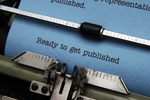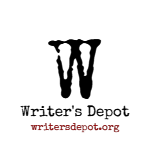

I’m sure you’ll agree with me when I say:
Entrepreneurs and business visionaries tend to have incredible ideas for potentially best-selling books… but most of those insights don’t make it to bookstore shelves.
So, why is that?
And what can you do to make sure your book idea comes to fruition?
Here’s the deal:
The most common reason those insights don’t make it to the bookstore and online platforms is that most writers don’t have industry knowledge about how to get from the thought process, to writing your book, to writing a book proposal, and finally to securing a publishing deal.
But that’s okay, because that knowledge is learnable… and this article will help you start your journey to becoming an author on the right foot.
You should know:
Whether you possess rare knowledge and experience about engineering or have an idea about writing a self-help book, the first thing you require is a highly detailed book proposal.
Perhaps the best way to help yourself is to utilize a book proposal template that lays out the basic structure and allows you to focus on catching the attention of an agent, editor or publisher. In fact, if you want to publish a book, this is your best bet.
What is a Book Proposal or Treatment?
An actionable book proposal, or treatment as industry insiders call it, convinces potential publishers that your project has market value. You are basically making an argument about why your nonfiction product is a marketable commodity for a publishing house to spend resources on and get a strong return on investment.
It’s important to keep in mind that commercial publishers are not only in it for the love of books, they are also tasked with turning a profit. With this business principle in hand, the goal will be to entice a publisher or literary agent to get behind your project and secure a deal that will pay you to write the book.
A substantial book proposal generally takes a few weeks to flesh out and the majority run 10-25 pages in length of the double-spaced text. That measure generally doesn’t include any sample chapters, which can extend the proposal to as long as 50 pages in many cases.
First-time writers commonly complete their manuscript and then trail back to hash out a professional level book proposal. Taking this approach can prove favorable for writers who have not yet established an industry reputation.
A completed draft manuscript gives agents and editors a sense of security that you can bring the project to completion and seamlessly work through the editing process.
What’s in a Book Proposal?
Just as you are hopeful of securing a million-dollar book deal, agents and publishers are crossing their fingers that the next book proposal they review will be a lucrative revenue stream as well. That’s why book proposals are not necessarily a discussion about the subject matter covered in the work of nonfiction. They are more about selling the book.
Pitching the subject matter of a project is widely considered the most significant mistake a new author can make. Book proposals written from the author’s perspective may be regarded as pet projects. While noble, such book proposals may come across as amateurish labors of love.
A top-tier book proposal steps away from the writer’s vantage point and provides an in-depth discussion about why readers will buy the book. Some industry insiders refer to this as the “statement of need” or “evidence of need” that an untapped niche or strong demand exists for this type of book. Therefore, your book proposal should impart critical information that outlines how it would benefit the lives of readers, not necessarily why it’s exciting.
Through your book proposal, you will be selling the idea that you enjoy unique expertise about a given field or topic that proves valuable to everyday people. You are persuading a book-publishing professional that your concept and words are valuable enough that people will swipe their credit card to the tune of $20 or more.
Perhaps the answers to these key question will help you articulate your plan to connect with an agent or editor.
Which gender would most benefit from the book? What is the target age range? Would readers generally live in urban, suburban or rural areas? Where would the work be placed in a retail outlet? A solid book proposal effectively answers these and other pertinent questions.
Book Proposal Sample
Booksellers are not particularly interested in how well you can craft the prose in a proposal. They want clearly defined, highly detailed ideas that are communicated in a fashion that the average person can understand. They want to know why you are an expert and a more marketable commodity than others in the field.
They want to know that your research is thorough and accurate and they want to know you can deliver on a paid project.
Consider this sample outline as a guideline to creating a persuasive book proposal that could make the difference between industry decision-makers selecting your project over others. Consider utilizing the following headings in your book proposal template.
1. Book Proposal Description
Begin by describing in under 500 words the essence of your book. This pointed overview might be akin to a description you might expect to find on the back cover of a New York Times Best-Seller.
2. Target Audience
Provide fact-based data about the primary audience, its size and outlying demographics that may purchase the book. Using specific numbers rather than broad generalizations.
3. Biographical Info About the Author
Works of nonfiction often rely on experience and expertise to be considered marketable. Make your case why you possess the credentials to justify a consumer buying your book.
4. Title Page
This basic element should include the working title and subtitle as well as a line that states: “A Proposal by…” and your name and other authors or contributors.
4. Proposed Table of Contents
The table of contents should list chapter names or sections. If you have completed the manuscript, include page numbers. This offers professionals a sense of page count.
5. Proposed Chapter Outlines
In less than three sentences, break down individual chapters and bullet-point their reader value.
6. Potential Endorsements
When other industry professionals endorse a work of nonfiction, that gives publishing houses a marketable resource. Providing such references can make a significant difference in terms of a company moving forward with your project.
7. Notable Quotes
Consider providing motivational quotes from industry leaders in your book’s sector. This may add a sense of inspiration that a decision-maker could gravitate toward.
Book Proposal Template
It may seem almost counterintuitive to wordsmiths but utilizing a standardized book proposal template increase the likelihood that your project will be picked up. Writing a work of nonfiction tends to be the creative end of the book-selling process. The front end is connecting with a professional.
Templates tend to refine and streamline the information that editors, publisher, and agents are most interested in knowing. They also help upstart writers avoid some of these common mistakes.
Failure to clearly articulate a market or need. Identified market to small or too niche for profitability. The proposed book is overly general or broad. The proposed book is not unique to the market. Lack of defined expertise or endorsement support. The project does not connect with readership needs. The proposal lacks clarity.
A book proposal template allows perspective authors to compartmentalize the specific items that editors, publishers, and agents require to look favorably on a project. There’s no doubt that you have a creative way to approach a subject that can make a difference in people’s lives. However, that information and your writing skills are separate and distinct issues from getting in the front door.
How Do You Submit a Book to a Publisher?
The vast majority of published books will not be reviewed by editors through unsolicited channels. Publishing houses work with tried-and-true literary agents who help them separate the wheat from the chaff so to speak.
It’s not necessarily that a nonfiction manuscript is good or bad necessarily. Publishers tend to work in niche markets or have wings of the business to deal with specific subjects. These people rely on agents.
Another important consideration is that publishers tend to reach out to industry agents and provide them with notice they are seeking books on trending topics. Submitting unsolicited manuscripts and book proposals are often rejected out of hand because this process would overwhelm editors. That’s why it’s imperative to work with a literary agent.
How Do I Find a Literary Agent?
First-time writers will need to do considerable legwork to secure a literary agent. This will involve researching industry professionals who have helped others in your niche field bring books to market. Much of this information is online, and you will be tasked with connecting the dots between specific agents and works published.
Don’t be surprised to discover that hundreds of agents handle similar material. Take these names and loosely rank them in accordance with your project’s traits. Print out hard copies of your completed book proposal and snail mail a copy to five select agents per batch.
Also, send an electronic version with a cover letter that mentions that a hard copy is in the mail. Wait a reasonable amount of time before following up.
If you click with a top-flight agent, move forward to establish a professional relationship and negotiate a deal that works for both parties. If you are declined, always conduct yourself as a consummate professional. It’s a smaller club than you might expect.
Simply consider any feedback and make necessary changes to your approach. Then send out another batch. Your book proposal will likely be a key driver in successfully connecting with a literary agent and securing a lucrative book deal.
What’s stopping you from publishing your book? Download this free fill-in-the-blank book writing template to map out your entire book and make your book-writing dreams a reality.
Related Posts:
How To Write A Book: 11 Steps You Need To Know To Be A Bestseller
How To Write A Book Title People Will Love
20 Tips to Overcome Writer’s Block
Read more: briantracy.com


